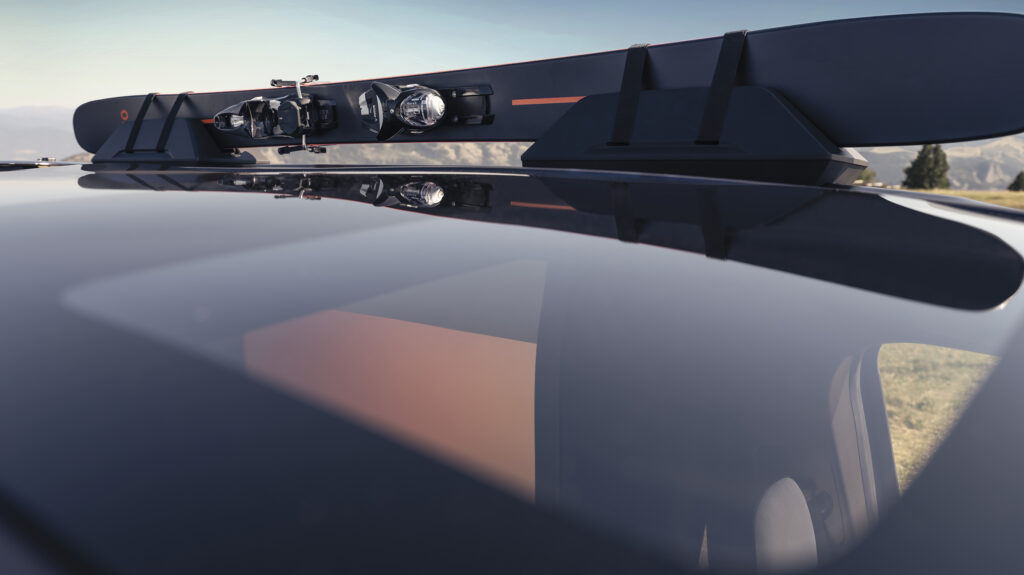Renault and Opel join the electric camper van party
An array of electric camper vans will be released in coming years, with Renault and Opel the latest to showcase sustainable lifestyle offerings.
The recipe includes pure battery power, reasonable range, sleeping for two or four, and embarrassingly daft (sorry, fun lifestyley) model names.
Anyone for Caviar?

First, the Renault Hippie Caviar Motel (really), based on the Kangoo L2 E-Tech Electric.
It’s to be fully revealed in showcar form at next month’s IAA Transportation event in Germany, touted as “a mobile shelter for adventurers and sports enthusiasts who love the outdoors.”
Its 90kW motor with 45 kWh battery pack offers a claimed range of 285km. Not enough to take you deep into the wilds, but adding 170km through optimal charging – it’s able to DC recharge up to 80kW – should take only 30 minutes.

No interior photos yet to show how cosy it will be (the Kangoo’s a small van), but we’re promised “several smart storage spaces” and eco goodness such as shelves and flooring made of recycled tyres and cork.
After you fold down the interior bench to make it a bed, you can enjoy the stars through the camper’s panoramic roof (shown above).
Luxury accommodation
This time last year, Renault showcased its Trafic-based Hippie Caviar Hotel (Hotel…not Motel, as it’s bigger) showcar, also fully electric. The mid-sized electric Trafic is set to go on sale in Europe later this year, but there’s no word when it could arrive in our market.

The Hippe Caviar Hotel’s interior has been shown, revealing a bench seat that can be converted into an almost Queen-sized bed (145cm x 195cm). It can slide out of the rear hatch should you wish to slumber under the stars.
The bench seat and corner armchair help create a lounge-type area when the bed’s stowed, and it does look rather fancy. A rooftop terrace with coffee table can be accessed via an extractable ladder. Nice touch.
Eco goodness comes from a wicker-effect dashboard; linen and wool natural fibres, ‘exotic’ wood and plant-based foam.
No word on when production versions may land in Australia, but with Renault Australia’s commitment to an electric future, and the Aussie love of the great outdoors, the French brand’s electric campers would surely attract local buyers.
The German alternatives

Mercedes-Benz has shown a camping version of its EQV van in Europe, and now Opel has revealed its all-electric Crosscamp Flex – a name that sounds like a tortuous muscle-building retreat.
Based on the Zafira-e Life and due for sale in 2023, there’s a solid 322km WLTP driving range plus sleeping for four.
Bettering the Renault’s specification, Opel uses a 75kWh battery and its 100kW charge rate means it can go from 5-80 percent charge in a claimed 48 minutes.

Camping specification looks impressive. The front seats rotate through 180-degrees; there’s a kitchenette, wash basin, gas cooker and fitted cupboards.
The rear bench seat turns into a double bed, while two more beds under a rising roof means there’s fun for four.
And what of Volkswagen; originators of the mass-market camper van? The eagerly-awaited modern-day Kombi-like ID.Buzz – potentially hitting Australia by 2024 – should ultimately have an all-electric ID.California camper van variant.

While there’ll be inevitable challenges with all-electric range in a camper van, the zero-emissions and silent running has obvious appeal.
Sustainable camping isn’t easy with a clattering diesel engine, and nature’s ambience is somewhat challenged when you fire up the generator to keep your beer fridge cool.








If only we could get the base model vans in Australia, like the Vauxhall/Opel Vivaro-e, or, the BYD T3.
But, given the neolithic nature of Australia, and, that the one van model apart from the Renault Kangoo ZE, that was kind of released in Australia; the BYD T3 (all 50 of them, for a country of 26 million people!), with some being held back, to add 10-15,000AUD to their advertised price (although, apparently, one, at the proper retail price, appears to have been captured in NSW, and, rehomed in WA), obtaining LCV EV’s in Australia, specially, in WA, for the general public, seems little more than a fantasy.